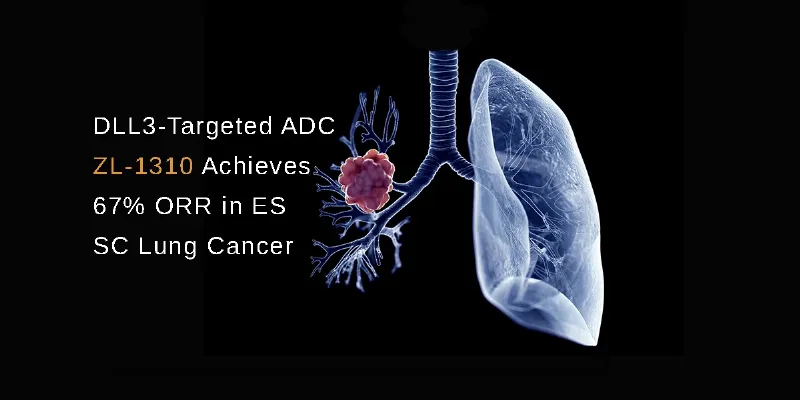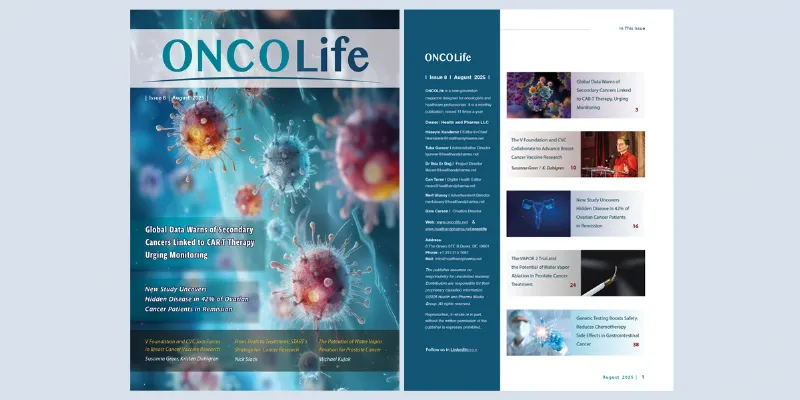Targeted ADC ZL-1310 Shows Promising 67% ORR in Heavily Pretreated ES-SC Lung Cancer

5 June 2025
Zai Lab presented updated Phase 1 data for ZL-1310, an investigational DLL3-targeted antibody-drug conjugate (ADC) for heavily pretreated patients with extensive-stage small cell lung cancer (ES-SCLC), at the 2025 ASCO Annual Meeting. In second-line treatment, it achieved a 67% objective response rate (ORR), including 79% at 1.6 mg/kg, with manageable toxicity below 2.0 mg/kg. Intracranial activity was observed in 68% of patients with brain metastases.
These new results, drawn from both dose escalation and expansion cohorts, suggest that ZL-1310 demonstrates clinically meaningful anti-tumor activity alongside a manageable safety profile, even in a heavily pretreated patient population.
“The updated Phase 1 results for ZL-1310 show strong anti-tumor activity, including intracranial responses with a manageable safety profile, reinforcing its potential as a meaningful treatment option for patients with previously treated ES-SCLC,” said Dr Manish R. Patel, Florida Cancer Specialists and Sarah Cannon Research Institute.
The Study and Patient Profile
The ongoing Phase 1a/1b trial (NCT06179069) has enrolled 89 patients with ES-SCLC across six dose cohorts, ranging from 0.8 mg/kg to 2.8 mg/kg. Notably, all participants had experienced disease progression following platinum-based chemotherapy, and the majority (90%) had also failed immune checkpoint inhibitors. This represents a particularly challenging patient group, with 33% of patients having received at least two prior lines of therapy, and 20% having undergone three or more prior treatments.
Baseline brain metastases were present in 30% of the participants, underscoring the aggressiveness of the disease in this cohort. Ten patients had previously been treated with a DLL3 bispecific antibody, offering an early look at ZL-1310’s activity in a refractory setting.
Efficacy Highlights
Across the second-line setting (n=33), ZL-1310 achieved an objective response rate (ORR) of 67% and a disease control rate (DCR) of 97%. The 1.6 mg/kg dose cohort showed particularly encouraging activity, with an ORR of 79% and a DCR of 100%.
Overall, 38 patients (confirmed and unconfirmed ORR) demonstrated tumor responses, with 29 (76%) of these responders still on study as of the data cut-off on April 1, 2025. Eighty-nine percent of patients experienced tumor shrinkage, and among the 31 patients with stable disease, 27 (87%) remained on treatment, suggesting a promising durability of effect. However, median duration of response has yet to be reached, reflecting the relatively short median follow-up of 3.4 months.
Importantly, intracranial activity was also noted: among 22 evaluable patients with baseline brain metastases, an ORR of 68% was reported, rising to 86% in those without prior cranial irradiation.
Safety Profile and Dose Optimization
ZL-1310’s safety profile appeared most favorable at doses below 2.0 mg/kg. In these lower-dose cohorts, Grade 3 or higher treatment-related adverse events (TRAEs) were observed in just 6% of patients, with no treatment discontinuations. Common severe TRAEs included anemia (2%) and neutropenia (4%).
At higher doses (≥2.0 mg/kg), the incidence of Grade ≥3 TRAEs increased to 23%, with five patients discontinuing therapy due to adverse events. Notably, there were two cases of treatment-related Grade ≥3 interstitial lung disease (ILD), one each in the 2.0 mg/kg and 2.4 mg/kg groups.
“The safety and efficacy profile of ZL-1310 continues to highlight a compelling opportunity to significantly improve the outcomes for patients with ES-SCLC and underscores its potential to become the first-in-class DLL3-targeted ADC in this setting,” said Dr Rafael G. Amado, President, Head of Global Research and Development, Zai Lab.
Future Directions
Buoyed by these encouraging data, Zai Lab plans to initiate a pivotal, randomized registrational trial later this year, evaluating ZL-1310 in the second-line setting against standard of care. The company also continues to expand the clinical program, with additional studies underway in the first-line SCLC setting and in other DLL3-expressing neuroendocrine carcinomas.











Comments
No Comments Yet!